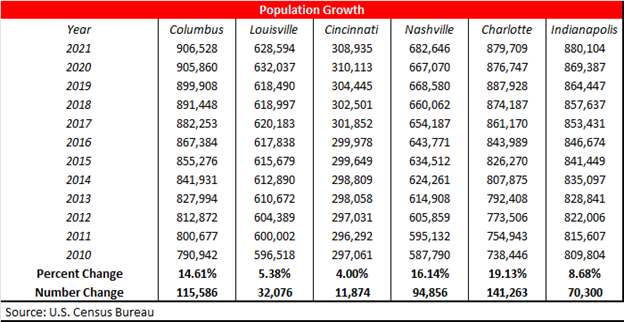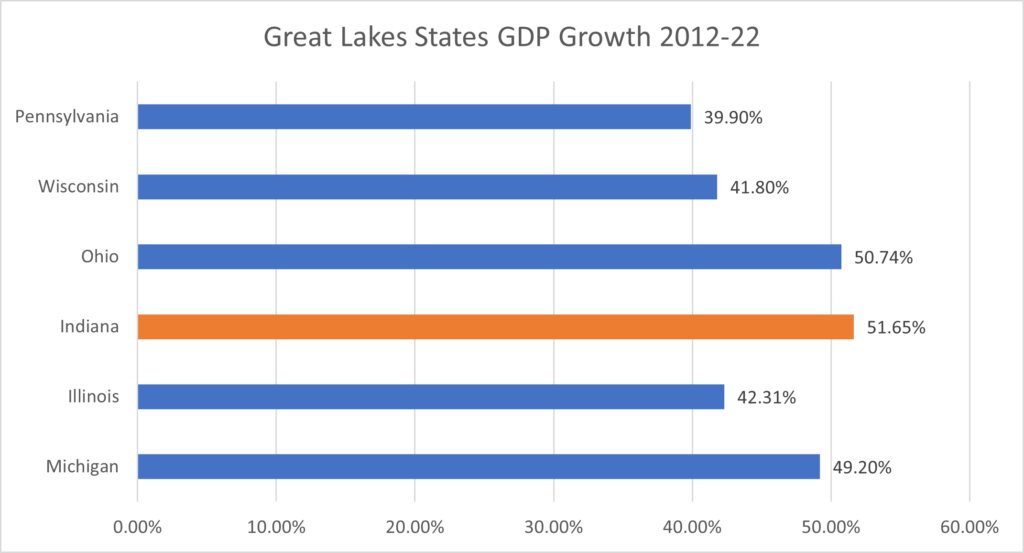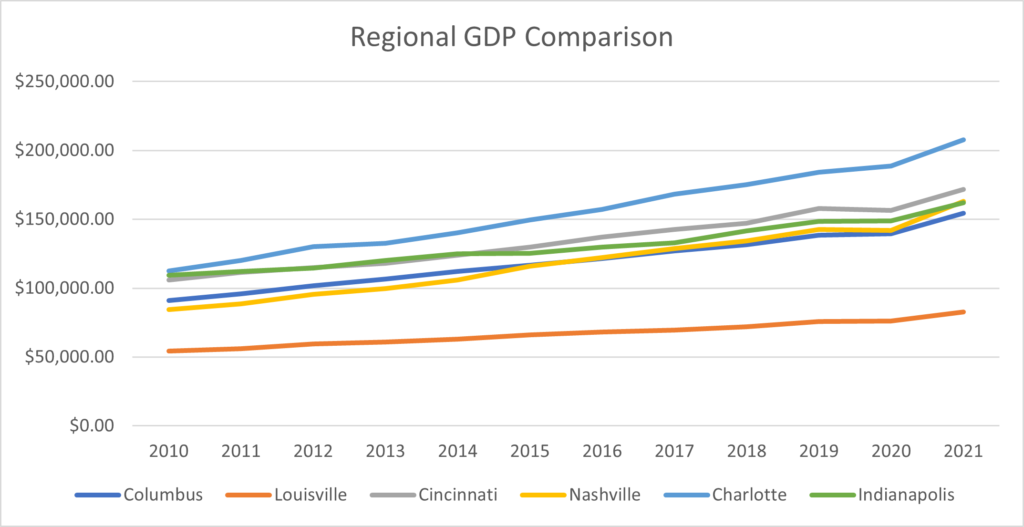Indiana is the nation’s 27th largest state in the union with 6.8M people but its strategic location in the Great Lakes Region has made the Hoosier state a long-time leader in the manufacturing industry and an important role in the pharmaceutical and other industries driven by the growing Indianapolis region. Indianapolis, the state’s capital and growing mid-sized urban market is the 33rd largest Metropolitan Statistical Area (MSA) in the United States- just behind by a mere 20,000 residents from their neighbor Columbus, Ohio.
Key demographic measures that impact corporate site location decisions include total population and population growth which impact the ability of a region to provide skilled workers—the larger the population pool the more chances for creating a skilled worker. Also, homeownership and median home value illustrate whether workers will be able to afford housing. Labor issues such as the level of higher education degree attainment and how many workers are in the active workforce impact a region’s ability to attract certain types of companies and companies at all if they have no room for growth in the active labor market. Quality of life issues such as commute times to work matter as well and overall wealth measures such as median household income and poverty rate impact company location decisions.
The demographic measures of major cities in states like Indiana have a big impact on corporate site location decisions. Indianapolis as the state’s capital and role as a growing, mid-sized urban market is a critical driver for corporate site location decisions. As the table below illustrates, Indianapolis remains a post-World War II success story with a well-educated workforce in a large market where the cost of living remains affordable as indicated by the market’s competitive cost of housing.

Population growth is a critical measure of economic success. Growing population centers attract companies struggling to find skilled labor. A growing population base creates a larger pool of workers for companies. As the table below illustrates, Indianapolis again illustrates steady population growth over the last decade. While this growth does not compete well with faster-growing southern markets such as Nashville and Charlotte, Indianapolis’s steady growth illustrates a market attractive to companies with cost-of-doing-business factors likely to be less impacted than hyper-growth markets in the south and southwest.

Median household income refers to the income level earned by a given household where half of the households in the geographic area of interest earn more and half earn less as measured by the U.S. Census Bureau. Median household income is an important demographic measure as it tells companies the relative wealth of a geographic region but also is an illustration of the general cost of doing business as it is one of the indicators of the potential wages of employees. The chart below compares the median household income of Indianapolis to competitor metro regions for corporate site location. Indianapolis is lagging in median household income, but this also may indicate a more competitive environment for labor wage costs.

As the table above illustrates, Indiana has enjoyed the largest growth in their GDP from 2012 to 2022 compared to other Great Lakes states- barely edging out their neighbor Ohio.

As the chart above illustrates, the Detroit region remains much larger from a total economic output standpoint than many peer cities, and Indianapolis dropped slightly behind its neighbor to the southeast at Cincinnati. As the chart above illustrates the following cities enjoyed a robust growth in GDP: Nashville: + 93.33%; Charlotte: + 95.0%; Columbus: + 69.71%; Detroit: + 47.14%; and Indianapolis: + 48.25%. This comparison of overall economic growth illustrates Indianapolis is not growing its economy as much as its peers in the south or even in Ohio.
Demographic and economic data for Indiana and its dominant urban market of Indianapolis provides a mixed bag from an economic performance standpoint. The regions constitute large and growing economic markets but, again like most of their Midwest urban markets, are growing at a slower rate than booming southern regions.